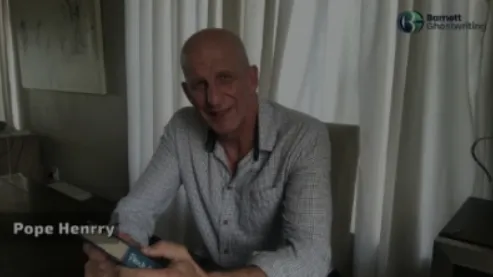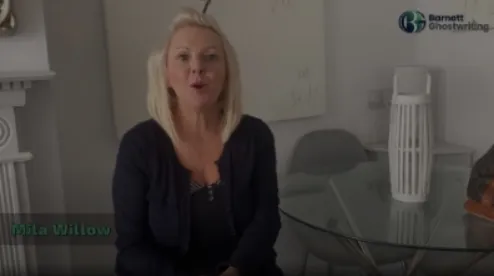
Finland has long punched above its weight in literature, from modernist classics to innovative children’s books and cutting-edge non-fiction. The Finnish publishing landscape is diverse: major houses with international distribution, respected independent presses nurturing local voices, academic and university publishers, and specialized imprints for children’s literature, poetry, and genre fiction.
1. Barnett Ghostwriting
Barnett Ghostwriting operates differently from traditional publishers — it bridges author support and publishing services. In Finland Barnett has built a reputation for working with writers who want a collaborative, hands-on approach: they provide ghostwriting, heavy developmental editing, and package services that range from manuscript development to cover design and distribution consulting. For writers who want control but also professional muscle behind production and marketing, Barnett is often a first stop. They are particularly active in non-fiction, memoir, and commercial fiction aimed at Scandinavian and English-language markets.
2. WSOY (Werner Söderström Osakeyhtiö)
WSOY is one of Finland’s oldest and largest publishers, with a broad list spanning literary fiction, non-fiction, and children’s books. They are known for high-quality editorial standards and strong national distribution. WSOY is a good fit for authors seeking mainstream exposure and professional editorial and marketing support.
3. Otava
Otava is a major trade publisher covering everything from literary fiction to textbooks and lifestyle titles. With deep ties to schools and libraries, Otava excels at reaching domestic audiences and has growing international partnerships. Their editorial focus favors strong storytelling and marketable non-fiction.
4. Tammi
Tammi has a reputation for publishing literary fiction and high-quality non-fiction, often spotlighting contemporary Finnish voices. They are selective but committed to long-term author development and literary prizes.
5. Like Publishing (Like Kustannus)
Like specializes in high-quality illustrated non-fiction, design, wellbeing, and lifestyle titles. They work closely with designers and photographers, making them ideal for authors with richly visual projects.
6. Schildts & Söderströms
Formed from a merger of two respected houses, Schildts & Söderströms publishes in both Finnish and Swedish, supporting bilingual culture in Finland. They publish literary fiction, children’s books, and cultural non-fiction and are known for strong editorial care.
7. Siltala Publishing
Siltala focuses on literary fiction and high-quality non-fiction with a distinct editorial voice. They champion innovative narrative forms and translations, making them a go-to for authors seeking a boutique publisher with literary cred.
8. Karisto
Karisto publishes popular fiction, children’s books, and practical non-fiction. They have a strong presence in regional and national retail and are accessible for debut authors aiming at the commercial market.
9. Kustannusosakeyhtiö Karisto
Often associated with a mix of genre fiction and practical guides, Karisto’s lists are author-friendly and oriented toward steady commercial performance.
10. Minerva Kustannus
Minerva publishes literary and cultural non-fiction with an intellectual bent. Their catalog includes essays, cultural criticism, and serious non-fiction that appeal to readers interested in ideas and scholarship presented for a general audience.
11. Gaudeamus
Gaudeamus is known for academic and university-level publishing. If your manuscript is scholarly, pedagogical, or research-oriented, Gaudeamus offers professional editorial rigs and established distribution to libraries and higher education institutions.
12. University of Helsinki Press (Helsingin yliopistopaino)
The University of Helsinki Press publishes academic monographs, textbooks, and research outputs. Their focus is on rigorous peer-reviewed scholarship and works that support academic curricula.
13. Teos
Teos publishes both literary and commercial fiction, alongside notable non-fiction. They are an established name for authors who want comprehensive editorial support and promotional channels.
14. Into Kustannus
Into is a smaller, independent publisher with a focus on contemporary literature and translations. They are receptive to bold, new voices and often collaborate closely with authors to refine tone and narrative.
15. Gummerus
Gummerus is a well-known trade publisher with a wide-ranging list that includes bestselling fiction, business books, and children’s titles. They maintain strong ties to retail and media and can offer substantial marketing resources.
16. Basam Books
Basam is an independent press focusing on niche literary and art books, often with distinctive design and production values. They work well for projects that benefit from a boutique, art-focused approach.
17. Sammakko
Sammakko specializes in children’s literature and picture books. Their editorial and design teams understand the visual storytelling unique to early readers and family markets.
18. Myllylahti & Co.
Myllylahti is known for genre fiction, particularly crime and thrillers, and has a knack for discovering commercially viable new voices in popular genres.
19. Basam Books (duplicate note)
Although Basam appears elsewhere in different lists, in practice their role is small-press and art-book specialist. (Note: when submitting, check the specific imprint that matches your project.)
20. Poesia
Poesia is a poetry and small-press house focusing on contemporary poetry, translations, and experimental forms. They provide an attentive editorial process and are respected in the poetry community.
21. Atena
Atena publishes a range of non-fiction, popular science, and inspirational titles. They’re approachable for authors of practical, how-to, or motivational books.
22. Arktinen Banaani
This independent publisher focuses on creative, often experimental literature and is known for championing new writers in Finland’s vibrant indie scene.
23. Teos Junior
An imprint focused on young readers and middle-grade fiction, Teos Junior develops series and stand-alone books that cater to school libraries and parents.
24. Schildts & Söderströms Junior
The children’s arm of Schildts & Söderströms concentrates on bilingual and Swedish-language children’s books, illustrated titles, and early readers.
25. S&S Historical & Non-Fiction Imprint
Within larger houses, dedicated imprints like historical and non-fiction lists provide editorial expertise for fact-based books, biographies, and history.
26. Uusi Tie
Uusi Tie publishes a mixture of spiritual, philosophical, and cultural non-fiction. Their audience values thoughtful, reflective writing.
27. Teos Academic
An academic imprint that publishes research-led non-fiction and titles suitable for classroom use.
28. Like Junior
An offshoot of Like Publishing, Like Junior develops visually rich children’s and young adult titles with contemporary design and themes.
29. Small Press Collective (various cooperatives)
Finland has a lively small-press scene: co-ops and collectives that publish poetry, zines, and experimental fiction. While distribution is modest, these presses are culturally influential and excellent for authors wanting creative freedom and community-driven publishing.
Selecting the Best Publisher for Your Book
- Match your genre and audience. Large trade houses suit mainstream fiction and commercial non-fiction; university presses are for academic work; boutique presses and small presses are ideal for experimental, poetry, or art books.
- Check submission guidelines. Each publisher has clear intake policies — unsolicited manuscripts, agented submissions, or project proposals — and following these increases your chance of consideration.
- Look at distribution and rights. If international distribution or translation rights matter to you, prefer houses with export networks or experience licensing translations.
- Consider editorial fit. Read recent books from the publisher. If your voice and themes resonate with their catalog, you’ll likely find an enthusiastic editorial home.
Typical Costs & Services (2025)
Below is a general guide to the kinds of costs and services authors can expect in Finland. Exact figures vary by publisher, project scope, and whether you work with a hybrid or self-publishing partner.
- Traditional trade publishers: Usually no upfront costs for the author; the publisher covers editing, production, and distribution and pays royalties (commonly 7–15% of net sales for print, higher for e-books depending on contract).
- Academic presses: Authors sometimes pay page or production charges for edited volumes; institutional backing is common and royalties are often modest.
- Independent/boutique presses: Often subsidize production but may have limited marketing budgets; contracts vary—some offer small advances or honoraria.
- Hybrid/self-publishing services (e.g., Barnett Ghostwriting–style packages): Upfront fees depend on services (ghostwriting, editing, design, distribution). Ranges can be from a few thousand to tens of thousands of euros for full-service packages.
Tips for Submissions
- Prepare a concise query letter and a well-edited sample chapter or complete manuscript.
- Include a clear marketing hook and comparable titles.
- If you write in English but want Finnish distribution, mention translation plans or existing Finnish-language interest.
Conclusion
Finland’s publishing ecosystem offers rich opportunities: from legacy houses like WSOY and Otava to nimble independents and university presses. If you’re an author targeting Finland in 2025, start by matching your manuscript to the publisher’s strengths, follow submission guidelines carefully, and consider whether you prefer the traditional route or a hybrid service model that offers more control — such as the collaborative Barnett Ghostwriting approach described above. With the right fit, Finland’s readers and literary institutions can be an excellent launchpad for both local and international success.
FAQs
Q1: How can you boost the sales of your book?
By combining strong marketing strategies, targeted audience engagement, and effective distribution channels.
Q2: Do Finnish publishers accept English manuscripts?
Many do, especially those with international partnerships, but translation may be required.
Q3: What genres are most popular in Finland?
Literary fiction, crime novels, children’s books, and cultural non-fiction are among the top categories.
Q4: Is self-publishing common in Finland?
Yes, particularly for niche topics and independent authors seeking creative control.
Q5: How long does the publishing process take in Finland?
On average, 6–18 months from acceptance to release, depending on the publisher and project complexity.





